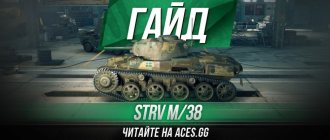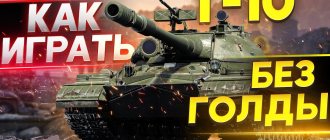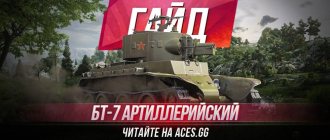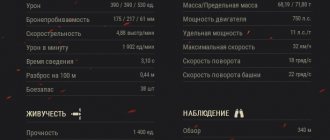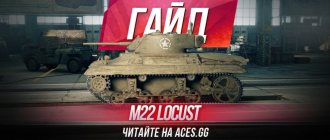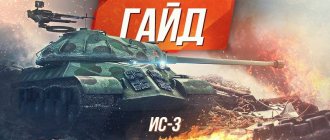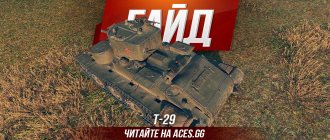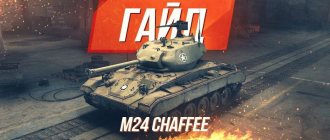| Home » Articles » World of Tanks |
The “Sand Bending” series is designed for players who came to World of Tanks for bending and frags.
To do this, it is absolutely not necessary to spend months pumping up branches of nations and farming credits, because bending and fun in the game is not only at high levels. It’s easier to find it in the sandbox, among low-level tanks, which you can get to in literally a day or two. Of course, all tanks in the game are equal, because they are equal in terms of win percentage. But some, as they say, are smoother. By purchasing and upgrading such tanks, you can get a lot of pleasure from bending and a whole scattering of medals. In the “Sand Benders” series I will talk about just such tanks.
Video guide to World of Tanks: Soviet light tank MS-1
Text version of the World of Tanks guide
The exploration of the Soviet development tree in World of Tanks begins with the MS-1 light tank. I am sure that many players do not have the best memories of this example of Soviet tank building. And this is not surprising: like all tanks in the game, the stock MS-1 has extremely dismal tactical and technical characteristics. An untrained crew also does not help unlock the potential of this magnificent tank.
You can upgrade the MS-1 to the top and unlock all the equipment of the next second level in just a few battles. It would seem that a few battles on the MS-1 and that’s it, the tank can be safely sold, freeing up space in the hangar for the next tank.
However, if you came to World of Tanks for the hobby, selling the MC-1 would be a big mistake. The hellish bending begins just at the moment when the MS-1 is pumped from stock to the top, and you have a tidy sum of credits in your account, sufficient to purchase equipment and additional equipment.
Let's take a closer look at the MS-1 to understand what makes this tank a true sand bender.
Historical reference
The first domestically produced serial tank was the MS-1 (small escort, first) or T-18. This index was assigned to it by its creators. The design experience and production skills acquired during the work on it made it possible in the early thirties to launch a wide production of armored vehicles of various types and purposes, as well as to create a qualitatively new branch of the military - tank (according to the name of those years - armored and mechanized troops).
History of creation
In 1920, fifteen M-type tanks were built in Nizhny Novgorod. Their design generally corresponded to the French Renault FT model of 1917. But they differed from the prototype in more universal weapons. So, the Renault was equipped with either a 37-mm cannon or a 7.62-mm machine gun, and the M was equipped with both, in the same turret. In 1927, the first and second parts of the “Combat Manual of the Infantry” were published. In it, especially in the second part, issues of the combat use of tanks occupied a significant place. In particular, the procedure for their use in close cooperation with infantry in all types of combat was examined in detail. In addition, this guidance document stated that the most important conditions for success are: the sudden appearance of tanks as part of the attacking infantry, their simultaneous and massive use over a wide area in order to disperse artillery and other “anti-armor”, as it was called in the regulations, enemy weapons ; echeloning tanks in depth while simultaneously creating a reserve from them, which made it possible to develop an attack to great depth; close interaction of tanks with infantry, which secures the points they occupy.
However, in 1927, the armored forces of the Red Army consisted of only one tank regiment, armed with captured MkIV or MkV tanks captured during the Civil War, six armored divisions with outdated Austin-Putilov or Putilov-Garford armored vehicles and several dozen armored trains . That is why it was necessary to establish our own tank building. And such an opportunity arose with the start of production of the first domestic mass-produced tanks. This, in turn, made it possible to begin the formation of separate tank companies and battalions. Taking into account the combat experience gained in the military conflict on the Chinese Eastern Railway in the fall of 1929, as well as as a result of the reorganization carried out in the summer of the same year, an experienced mechanized regiment was created. After extensive testing, the first mechanized brigade was formed at its base in May 1930. It consisted of three regiments: tank, reconnaissance and artillery, as well as a number of combat and logistics support units. The tank regiment was armed with MS-1 (T-18) tanks, and the reconnaissance regiment was armed with domestic BA-27 armored vehicles (base AMO-F-15). The process of creating MS-1 occurred as follows. The newly created Tank Bureau under the Main Directorate of Military Industry (GUVP) was involved in its design. On May 6, 1924 it began work. And although there was not a single person in the design team who had previously been involved in tank building, and the necessary documentation was completely absent, in 1927, an experimental T-16 tank came out of the gates of the experimental workshop (the former Obukhov gun and steel plant) in St. Petersburg. It represented a development of the ideas inherent in the “M” type machines of the Sormovo plant, but at the same time it was significantly different from them. In particular, the power plant, chassis and weapons underwent changes. For example, a carburetor engine with a capacity of 35 horsepower had a common crankcase with a gearbox. It was installed across the hull, improving the layout of the machine. Designer P. Syachintov improved the 37-mm French gun, which was placed in the tank turret under the name PS-1. New electrical equipment, power supply, lubrication systems, and chassis elements were created. Until June 1927, the T-16 underwent factory tests, and from the 7th to the 15th of the same month and year there were general tests. The commission, chaired by the Chief of Supply of the Red Army P. Dybenko, recommended making some changes to the engine installation systems, using larger diameter road wheels, and adding a shock absorber roller to the chassis on the front branches of the tracks. Work to improve the prototype dragged on until November. And yet, the Revolutionary Military Council of the USSR, without waiting for their completion, accepted the vehicle into service. This unprecedented case in history can only be explained by the need to start producing tanks as soon as possible. The new vehicle, designated MS-1, was intended to interact with infantry and accompany it in battle. Tank production began in 1928. The first thirty MS-1s were built with funds from the voluntary society OSOAVIAKHIM. MS-1 was withdrawn from service in the mid-thirties. But for a long time it was used as a base for research work and training tank crews in basic driving and shooting skills. For example, experiments were carried out to install 45- and 76-mm guns and observation devices on it, and the armor protection and chassis were strengthened.
In the fall of 1938, after the border conflict in Primorye in the area of Lake Khasan, the MS-1s removed from service were used in fortified areas on the border as fixed armored machine gun points. The gun, engine unit and chassis were dismantled from the tanks. In place of the cannon, an installation of twin DT machine guns was fixed in the armored mask. A cutout in the bottom was located above the entrance to an underground casemate equipped for ammunition and food. The tanks were placed in concrete or wood-earth caponiers.
That is why for a long time none of the military museums had this unique tank. Only in the fall of 1983, two found MS-1 hulls of the 1930 model were brought to one of the tank repair enterprises of the Red Banner Far Eastern District and there they restored it using a prototyping method.
Performance characteristics of MS-1
Before moving on to studying the tactical and technical characteristics of the MS-1, a couple of small comments.
Firstly, battles in World of Tanks with Tier I and II tanks do not take place on all maps that are in the game, but on a very limited number of them. Thus, Tier I tanks only appear on four maps: Malinovka, Province, Mines, and Himmelsdorf. At the same time, on Malinovka and Province it is much easier to realize the advantage of a powerful sniper gun than, for example, an automatic rapid-fire melee gun.
Secondly, Tier I tanks have a reduced level of battles. In World of Tanks, you will not encounter opponents higher than level two, unless, of course, you create a noob platoon with a player on a higher level tank.
Armed with this knowledge, you can return to the tactical and technical characteristics of the MS-1 and compare it with its classmates.
Let's start with the main thing, that is, with the gun. The MS-1 is equipped with a 45 mm cannon with an average armor penetration of 51 mm and damage of 47 HP. This is the most powerful gun among all Tier I tanks, which confidently penetrates even the Sand Mouse, the French H35 light tank.
Thus, the British medium tank Medium I has a gun with less armor penetration (45 mm) and a lower rate of fire, but it does more damage, as much as 70 units. The French FT-17 has less armor penetration (46 mm), less damage - only 27 units, but a higher rate of fire. The rest of the tanks are armed either with automatic guns, which perform best in close combat, or have completely uncompetitive guns. In general, taking into account the maps available for battles, the MS-1 gun should be considered the best at its level.
If we talk about the dynamic characteristics of the tank, then with a maximum rated speed of 32 km/h and a specific power of 10.8 hp/ton, the MS-1 is second only to the American light tank T1 (which reaches a speed of up to 41 km/h with a specific power 14.5 hp/ton).
Like the vast majority of Tier I tanks, the MS-1 has a visibility of 280 meters. In this parameter, it is second only to the German L-Traktor tank, which has as much as 310 meters of visibility in the top.
The last parameter that I would like to focus on is the strength of the tank. The stock MS-1 has only 90 units of durability; in terms of this indicator, it cannot be compared with the Tier 1 record holder, the British Medium I tank, which has as many as 130 units. Although the same Chinese light tank NC-1 with its 100 HP is not far behind the MC-1.
Modules:
Turrets/guns
| Lv. | Tower | Armor (mm) | Rotation (deg/sec) | Review (m) | Weight, kg) | Price (credits) |
| I | MS-1 arr. 1930 | 16/16/16 | 35 | 280 | 240 | 0 |
Compatible weapons:
| Lv. | gun | Penetration (mm) | Damage (HP) | Rapid fire (rounds/min) | Spread (m/100m) | Mixing (c) | BC | Weight, kg) | Price (credits) |
| I | 37 mm Hotchkiss | 34/44/19 | 30/30/36 | 24 | 0.54 | 2.5 | 104 | 104 | 0 |
| II | 45 mm arr. 1932 | 51/88/23 | 47/47/62 | 20.69 | 0.46 | 2.5 | 54 | 240 | 2 000 |
Engines
| Lv. | Engine | Power (hp) | Fire probability (%) | Weight, kg) | Price (credits) |
| I | GAZ-M1 | 55 | 20 | 215 | 0 |
Chassis
| Lv. | Chassis | Max. load (t) | Turning speed (gr/sec) | Rmin | Weight, kg) | Price (credits) |
| I | T-18 | 6.5 | 48 | B/2 | 1 200 | 0 |
Radio stations
| Lv. | Radio station | Communication range (m) | Weight, kg) | Price (credits) |
| I | 71-TK-1 | 265 | 50 | 0 |
Choice of tactics and additional equipment installed on MS-1
Having analyzed the tactical and technical characteristics of the MS-1, it’s time to choose the right winning battle tactics for it. In World of Tanks you need to properly use the advantages of your tank and compensate for its shortcomings. Based on the totality of tactical and technical characteristics, the MS-1 is more likely to be a turret-mounted tank destroyer than an ordinary light tank. And you need to play it accordingly. Proper camouflage using bushes, fallen trees and terrain, passive light and actions with an eye on allies turn most battles into a fun shooting gallery.
To improve the already good visibility, it is advisable to install a “Stereo Tube” on the MS-1, which gives +25% visibility from a stationary tank. In general, I recommend installing a stereo tube on almost all tanks up to level V inclusive. “Gourmets” can additionally install “Coated optics” on the tank, which constantly gives +10% visibility, but keep in mind: the bonuses from the stereo tube and coated optics do not stack, i.e. while moving you will receive a bonus of no more than 10%, and only approximately 3 seconds after a complete stop (when the stereo tube begins to operate) you will receive +25% visibility.
If you are short on funds, take the “Camouflage Net”, which gives +25% to camouflage a stationary tank. The main advantage of the camouflage net and stereo pipe is that this equipment is not considered complex in the game, and you do not need to spend in-game gold to dismantle it.
In addition, I advise installing “Reinforced aiming drives” on almost all tanks. And the MS-1 is no exception in this regard, because the 45 mm gun is brought down very slowly.
I don’t see much point in setting “Improved ventilation”. The camouflage network and coated optics seem to me to be the best solutions. However, improved ventilation on the MS-1 costs nothing, it can be installed at least to save money. However, the valve is considered complex equipment in World of Tanks. If you want to change it, you will either have to pay for dismantling it in gold, or “break” the equipment.
Leveling up the crew on MS-1
The MS-1 crew consists of only two people, which is both a big advantage of this tank and a huge disadvantage. On the plus side, you can train your crew up to 100% by spending very little in-game gold on it. And immediately begin to upgrade the crew’s skills and abilities. In addition, when upgrading the crew, you will have a significant increase in the upgrade speed (if, after upgrading the MC-1 to “elite” status, you check the “Accelerate crew training” checkbox next to the crew). At the same time, your crew will be upgraded 50% faster. For comparison, the crew of the “elite” British tank Meduim I will be upgraded only 20% faster.
The downside is that, unfortunately, it will not be possible to train the crew in many useful specialties. After all, the crew commander, in addition to his main specialty, combines the functions of a gunner, radio operator and loader!
If you are not going to spend in-game gold on retraining the crew, and do not want to lose experience during retraining, immediately choose to upgrade the “Sixth Sense” skill for your commander. It, like all skills, will work only after leveling up to 100%, but you will not need to pay for retraining. However, I still recommend not doing this and either retraining the commander for gold, or losing a little experience during retraining.
I recommend that the first skill for the entire MC-1 crew be leveling up “Camouflage”. Then we retrain the commander for “Sixth Sense” and again select “Camouflage” for him, this time as the second skill. Remember that in order to level up “Camouflage” in World of Tanks to 100%, you need to level it up for all crew members. So, if you fully upgrade the “Disguise” only for the driver, you will receive only half of the bonus due to you.
I don’t see any point in downloading “Repair” and especially “Firefighting” on MS-1. As, indeed, is “Combat Brotherhood,” although this can already be argued. It makes sense for a driver to upgrade the “Off-Road King” skill, and then “Smooth Move” or “Virtuoso”. However, one can also argue about the order of leveling up these skills.
After the Sixth Sense and Masking, it makes sense for the crew commander to upgrade Radio Interception, which will further increase the tank’s viewing range.
VODs on MS-1
Set of waters for the MS-1 tank:
A set of VODs on the Soviet MS-1 tank
| Author: RussianCasual | Time: 00:23:20 |
Category: Practical exercises, World of Tanks Video supplement to the guide on the Soviet MS-1 light tank. VODs on all four maps where MS-1 falls. Look, learn, nogebai...
The fun in World of Tanks begins at level I - a guide to the Soviet MS-1 light tank! Analysis of tactical and technical characteristics, selection of appropriate combat tactics, selection of additional equipment and the right choice of perks when leveling up the crew - you will learn all this in my guide!
| Category: World of Tanks | Added by: Ivanovich (Apr 28, 2013) | Views: 23615 | Tags: tanks, WoT |
More detailed information about the technique:
At the first level of battles on the MS-1 battle tank, you can use attack and defense tactics. However, the low safety margin does not allow it to be in the thick of battles, which, coupled with low dynamics, makes it a very easy target for the enemy.
At the second level of battles on the MS-1 battle tank, you can only use support tactics. Due to the shortcomings that were mentioned above during active operations, the combat vehicle will immediately be destroyed by the enemy team. Such a tank is very excellent for defense, due to its excellent weapon - which has high penetration, rate of fire and good damage, but poor accuracy. Also, its small dimensions allow it to remain undetected by the enemy for longer. To conclude, the tank is excellent for medium distances, due to the low strength and poor accuracy of the gun.
Bottom line: the tank is great for a beginner who will learn to use cover and bushes for camouflage purposes, as well as use the main advantage of the weapon.
